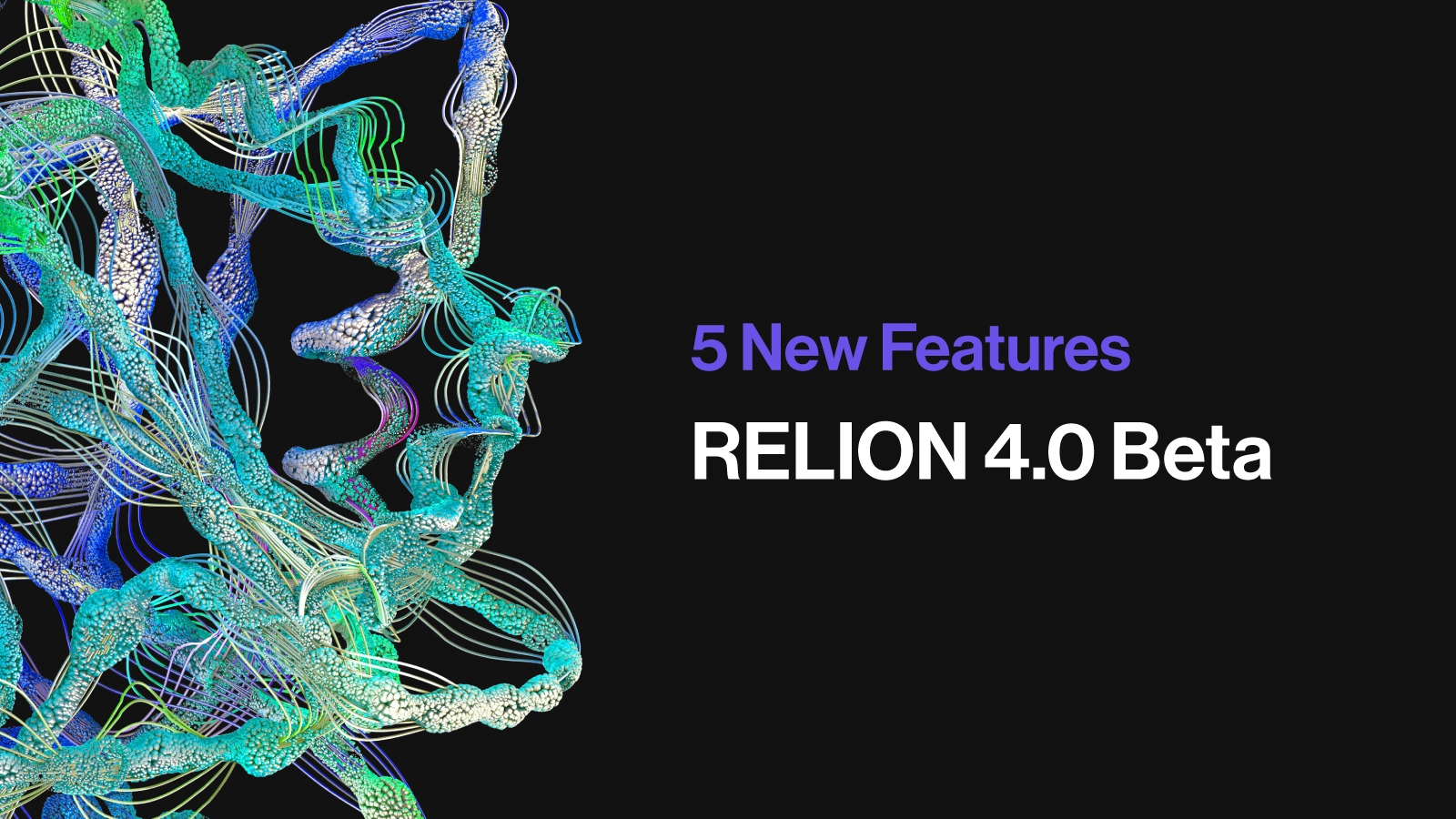What is RELION?
RELION (REgularised LIkelihood OptimisatioN, pronounced rely-on) is a software package that employs an empirical Bayesian approach for electron cryo-microscopy (cryo-EM) structure determination. It is developed in the group of Sjors Scheres at the MRC Laboratory of Molecular Biology.
RELION is distributed under a GPLv2 license which means that anyone (including commercial users) can download, use and modify RELION for free. The developers only request that if it's useful in your work then you credit RELION team members appropriately and cite their papers.
At the end of 2021, the RELION 4.0 Beta was released, with a number of new features. The following are 5 features they are showcasing.
Note: Schedules has been renamed to Schemes to prevent confusion with the existing functionality to schedule jobs in the GUI.
RELION 4.0 Beta Features
A new approach to subtomogram averaging
Jasenko Zivanov and Joaquin (Kino) Oton have implemented a new approach to averaging in cryo-electron tomography, which replaces standard sub-tomograms with the concept of pseudo-sub-tomograms. The new approach leads to better weighting of the individual 2D images that make up a tilt series in relion_refine and the single-particle concepts of Bayesian polishing and CTF refinement have now also been implemented for tomography data. A preprint/publication about this work is pending.
The VDAM refinement algorithm
Dari Kimanius has implemented a new, gradient-driven algorithm with implicit regularisation, called Variable-metric Gradient Descent with Adaptive Moments (VDAM). The VDAM algorithm replaces the previously implemented SAGD algorithm for initial model generation, and makes 2D and 3D classification faster, especially for large data sets. A preprint/publication about this work, together with the automated class selection and the execution of workflow, is pending.
Automated 2D class selection
Liyi Dong developed a new algorithm for automatic selection of 2D class average images that combines features that are extracted from RELION’s 2D classification metadata with a convolutional neural network that acts on the 2D class averages themselves. The corresponding program, relion_class_ranker can be called through the Subset selection job type.
Automatic execution of workflows
Sjors developed a framework for the automated execution of predefined workflows, which is explained in more detail in the section on On-the-fly processing.
Tighter integration of the pipeliner with CCP-EM software
The CCP-EM team, mainly Matt Iadanza, Colin Palmer and Tom Burnley, have implemented a python-based pipeliner in the CCP-EM software that mimics the relion pipeliner, but will be extended to include other CCP-EM softwares too. The python interface is convenient for scripting, and can also be called from relion’s main GUI, by adding the additional argument relion --ccpem &.
If you are interested in accelerating your research with a RELION workstation or server, SabrePC can help find a solution that fits your workload. If you have any questions or want to suggest some other topics for us to focus on, please feel free to contact us.


